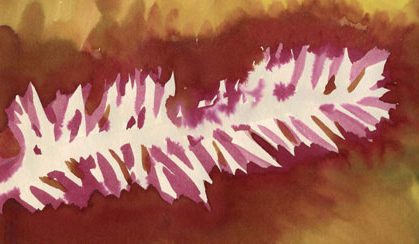The Lives of Three Wattles, the Life of a Hound;
The Lives of Three Hounds, the Life of a Steed;
The Lives of Three Steeds, the Life of a Man;
The Lives of Three Men, the Life of an Eagle;
The Lives of Three Eagles, the Life of a Yew;
The Lives of Three Yews, the Length of an Age.
—Traditional
Once, the yew tree lived and died in the company of its friends, the blackthorn and the hawthorn, the birch, the ash and the oak. The yew did not envy the blighted elm or the vulnerable hazel, with their passing brief lives, but it had no ambition to live longer than any other tree in the forest. It was content with its allotted time.
Neolithic man cleared the wildwood of Kingley Vale for grazing animals and crops, but the yew on the lower slopes did not mind. Later, Bronze Age artisans constructed burial mounds on the chalky grasslands and limestone hills above the woods, the sleeping tombs of warriors long dead. Later on the summit of Bow Hill came the Devil’s Humps and Goosehill Camp and a shabby temple to Roman gods, but still the yew did not object. As time walked its steady pace on, beneath the dappled light and green shadows in the glade, Jutes and Britons and Angles breathed and lived and sighed and loved. These tribes were not the same, any more than the trees of the forest were the same. They were not fashioned by the same rituals or traditions or superstitions, yet they lived side by side, in harmonious coexistence, as did the trees. Yew with willow with pine.
But then, then.
In the year 874 came the Vikings who burned and seized and destroyed. They swept north from Chichester into the Sussex weald and the forest of Kingley Vale. The Saxon defenders sought sanctuary among the ancient green and mossy pathways where the yew trees held sway, but found no protection there. The yew could only watch and grieve as the once silent grove echoed with the violence of sword and shield, the shriek of iron and split bone. The inhumanity of it, the pointlessness of it, slipped into the leaf and the bough of the yew tree, turning the brown bark to purple. And the presentiment of death seeped into the berries, staining the pale, subtle fruit a vivid blood red.
Then the yew understood that the cycle of things had changed. Their destiny was to stand witness, memorials to those who had fallen in order that such things should not happen again. They must live until the lesson of harmony had been remembered. They did not wish it, they did not want to be left behind as the rowan and the sycamore and the beech passed into different dimensions, but they accepted it was their lot because of the battles that had been fought beneath their branches. Where each warrior fell in Kingley Vale, a yew touched the earth with its long, trailing fingers and a new tree sprang up. Soon, where the bodies of the courageous slain lay, a copse of sixty yews stood sentinel, a reminder of where the battle had been fought, and lost.
The ancient yews of Kingley Vale lived on and on, bound now to an unkind cycle of decay and rebirth and memory. Their branches grew down into the earth to form new stems. The trunks of the sixty trees rotted, but now gave life within to new trees that grew and grew until they were indistinguishable from the root.
The years passed. The generations passed, the centuries passed in the endless pattern of silver springs and shimmering summers, golden autumns and hoary winters. Still men did not learn that death breeds only death. Little by little, the reputation of the yew grew. Without wishing it, the yew became a symbol of resurrection and hope, and wisdom. In Marden and Painswick, Clifton-upon-Teme and Iona, throughout the length and breadth of the country, the yew became the favoured tree of the graveyard, of mourning, testament to the transience of memory, to the frailty of human experience.
Over eleven hundred years have passed since that first battle. If you follow the path to the centre of Kingley Vale, the sixty still stand, their branches gnarled, twisted like an old man’s knuckles, their boughs weary. Tendrils trail the ground, touch the earth, paddle deep around in mossy roots. And within and above and around the wood, live green woodpeckers, red kites and buzzards, deer and stag, the chalkhill blue, holly blue and brimstone butterflies, so brief.
The people of Sussex are afraid to walk in the oldest part of the forest. They say that, at the winter solstice, the yew trees whisper to one another, singing sibilant songs of the folly of men. And so they do. Each year, if you listen carefully, you will hear the trees speak all the words they have captured in the seams of their leaves over the previous year, of the hopes, the stories, the delusions of the humans who have come to the grove to walk, to pray, to weep, to wish, to rest.
These yew trees are the oldest living things in the country. They wish it were not so. They would like to slide away, as can the ash and the oak and the elder. But human memory is brief, stupid, unconnected. Men have not yet learned to live side by side like the trees of the forest. So when the white winter dawn comes once more, and the solstice is over, the yews sigh and stretch and settle back into their ancient selves for one more year.
For the length of an age.

